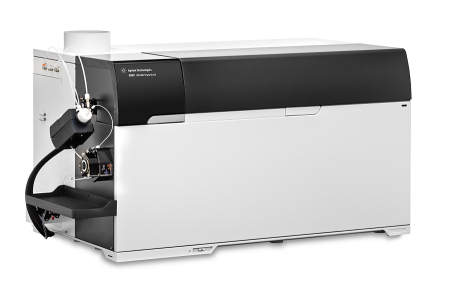Agilent is showcasing the new solutions at the annual meeting of the American Society for Mass Spectrometry, June 5-9, in San Antonio, Texas. The highlight of the new releases is the Agilent 8900 Triple Quadrupole ICP-MS system. The controlled-reaction chemistry of this inductively coupled plasma/mass spectrometry system delivers the lowest detection limits for previously difficult elements, such as sulfur, silicon and phosphorus. It also includes a fast detector that sets a new benchmark for single nanoparticle applications.
Agilent Technologies 8900 Triple Quadrupole ICP-MS
Interference removal is more reliable and easier to achieve with
Agilent’s second-generation 8900 ICP-QQQ. In 2012 Agilent released the
Agilent 8800, the world’s first Triple Quadrupole ICP-MS (ICP-QQQ) with
MS/MS capability. This ground-breaking instrument opened up new
analytical possibilities for analysts in hundreds of laboratories around
the world.

Launching at ASMS 2016, the new second generation 8900 ICP-QQQ offers a range of configurations to cover applications from routine contract analysis to advanced research and high-performance materials analysis. With helium-mode performance and productivity to match Agilent’s market-leading quadrupole ICP-MS systems, the Agilent 8900 ICP-QQQ adds MS/MS mode, for controlled and consistent interference removal in reaction mode, making it the world’s most powerful and flexible multi-element analyzer.
The new Agilent 8900 ICP-QQQ provides outstanding performance for existing multi-element ICP-MS applications. The Agilent 8900 also introduces new analytical capabilities not previously possible using ICP-MS. Low level determination of previously difficult elements, separation of direct isobaric overlaps, and fast, trace analysis of emerging nano-scale materials extend the application of ICP-MS into new fields of analysis.
Superior performance- Controlled reaction chemistry for consistent, reliable results
- Resolution of isobaric overlaps, beyond capability of high-resolution ICP-MS
- Lowest detection limits, even for previously difficult elements such as S, Si, P
- Unparalleled flexibility
- 4-channel cell gas control as standard
- Unique precursor/product ion scan modes clarify reaction processes
- The most exciting and versatile ICP-MS for research and method development
Powerful, Flexible, Intuitive ICP-MS softwareICP-MS MassHunter software uses an intuitive graphical layout, based on the use of toolbar gadgets, making it easy to learn and use. MassHunter software is used across Agilent MS platforms, simplifying cross training for Agilent quadrupole ICP-MS, ICP-QQQ, LC/MS and GC/MS products.
Enabling technology- Monitor lower levels of ultra-trace contaminants in bulk chemicals and wafer processing baths.
- Quantify unknown proteins and peptides, to measure the sulfur and phosphorus heteroelements accurately at low concentrations.
- Characterize nanoparticles in complex environmental, food and biological samples, even at the sub-50 nanometer scale.
- Measure selenium, arsenic and arsenic speciation with better accuracy at lower levels in all food samples.
 Related EVISA Resources:
Related EVISA Resources:
 Company database: Agilent Technologies and their products
Company database: Agilent Technologies and their products
 Instrument database: Agilent Technologies Inc. - 8800 - Triple Quad ICP-MS
Instrument database: Agilent Technologies Inc. - 8800 - Triple Quad ICP-MS Instrument database: Agilent Technologies Inc. - 8900 - Triple Quad ICP-MS
Instrument database: Agilent Technologies Inc. - 8900 - Triple Quad ICP-MS Brief summary: ICP-MS - A versatile detection system for trace element and speciation analysis
Brief summary: ICP-MS - A versatile detection system for trace element and speciation analysis Brief summary: LC-ICP-MS: The most often used hyphenated system for speciation analysis
Brief summary: LC-ICP-MS: The most often used hyphenated system for speciation analysis Brief summary: GC-ICP-MS: A very sensitive hyphenated system for speciation analysis
Brief summary: GC-ICP-MS: A very sensitive hyphenated system for speciation analysis Link page: Mass spectrometry resources
Link page: Mass spectrometry resources Related EVISA News
Related EVISA News
 July 17, 2013: Agilent Technologies Triple Quadrupole ICP-MS Selected for R&D 100 Award
July 17, 2013: Agilent Technologies Triple Quadrupole ICP-MS Selected for R&D 100 Award July 19, 2012: Triple Quad ICP-MS: Pushing the limits for quantitation of phosphorus and sulfur
July 19, 2012: Triple Quad ICP-MS: Pushing the limits for quantitation of phosphorus and sulfur
last time modiofied: June 9, 2016